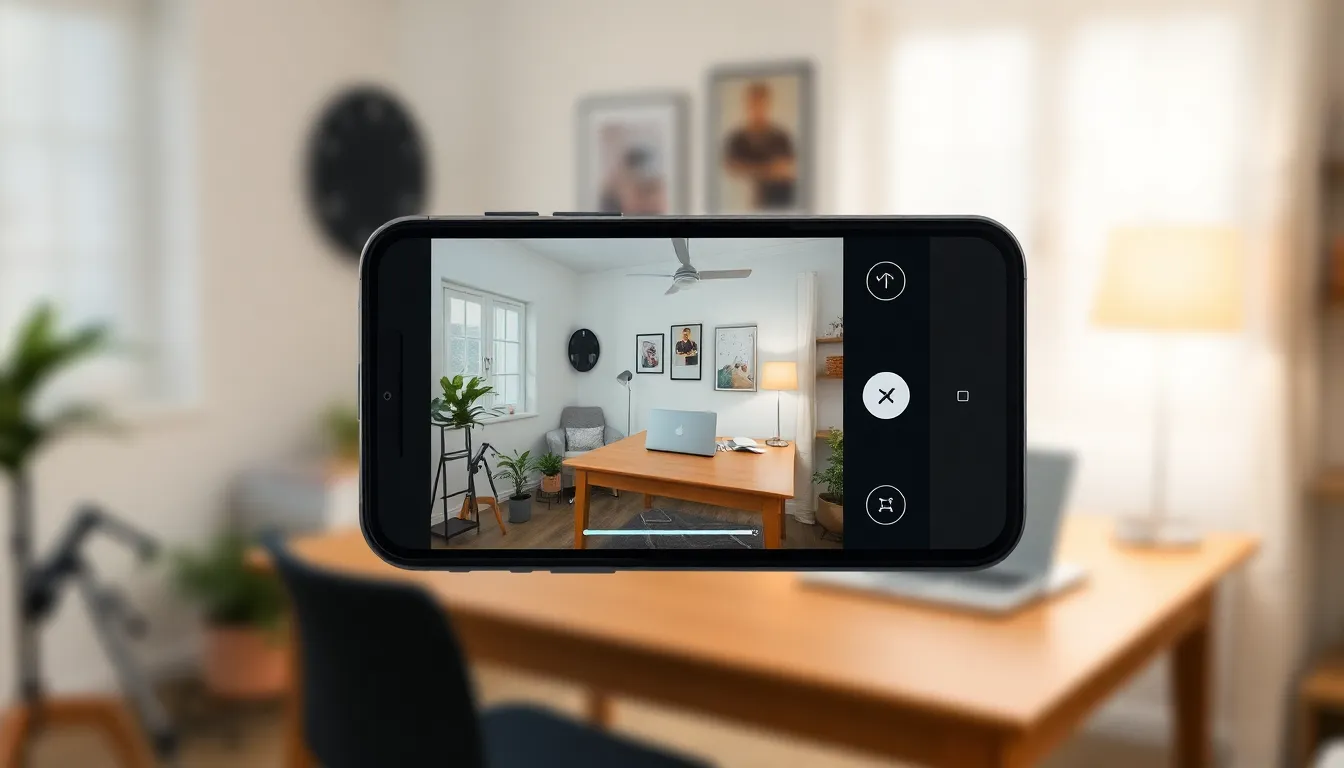Imagine this: you’re ready for that big Zoom meeting, looking sharp and confident, only to discover your camera’s flipped like a pancake. Suddenly, your colleagues see you in a way that even your mirror wouldn’t recognize. It’s a classic case of the “inverted camera” on your iPhone, and it can turn any professional call into a comedy show.
Don’t worry; fixing this quirky little glitch is simpler than figuring out how to unmute yourself. With just a few tweaks, you can get your camera back on track and ensure you’re presenting your best self—right side up! Let’s dive into the easy steps that’ll have you looking like a Zoom pro in no time.
Table of Contents
ToggleUnderstanding the Inverted Camera Issue
The inverted camera issue on iPhones during Zoom meetings affects many users. Frequent occurrences include flipped images or mirrored reflections, causing confusion. Users often see a backward view of themselves, which can be disorienting. This problem arises primarily from camera settings, not hardware failure.
Zoom’s app can sometimes adjust orientations automatically, leading to unexpected results. Portrait mode settings may contribute to the issue as well. Some users notice this problem only when switching between front and rear cameras during a call. Recognizing the source of this issue helps users respond effectively.
Initial troubleshooting involves checking the app settings. Users should ensure the correct camera is selected within the Zoom app. Accessing the device settings allows users to adjust orientation preferences if necessary. Additionally, restarting the app or the device can resolve temporary glitches.
Exploring these basic solutions often resolves the inverted camera issue quickly. Knowing that this issue isn’t unique to individual devices helps users feel less frustrated. Many iPhone models, specifically the latest versions, encounter this problem, emphasizing its prevalence. Being aware of the causes and acknowledging common experiences equips users to tackle the situation confidently.
Common Causes of Inverted Camera on Zoom

Understanding the root causes of an inverted camera on Zoom can simplify the troubleshooting process. Common issues typically involve software glitches or hardware malfunctions.
Software Glitches
Software glitches frequently lead to an inverted camera. Problems may arise during automatic updates, changing settings, or app conflicts that affect camera orientation. Zoom’s app can sometimes mistakenly mirror camera images, creating a flipped effect. Users should check for updates regularly to ensure they have the latest version, as updates often fix bugs causing such issues. Restarting the app can address temporary glitches as well, restoring normal camera functionality. Additionally, adjusting Zoom settings like “Mirror my video” in the app may help rectify the issue.
Hardware Malfunctions
Hardware malfunctions can also cause an inverted camera. Potential issues include a damaged camera module or internal components that disrupt normal operation. Users experiencing persistent inversion should examine their device for physical damage that could affect the camera. Faulty connections within the iPhone can also lead to image distortion. In such cases, seeking professional assistance from Apple or authorized repair centers is advisable to resolve underlying hardware problems.
Step-by-Step Solutions
Correcting an inverted camera on Zoom for iPhone users involves a few simple, effective steps. Each solution targets common causes for this issue.
Restarting the App
Restarting the Zoom app often resolves temporary glitches. Closing the app completely ensures that no background processes interfere. To do this, double-click the home button or swipe up from the bottom of the screen. Locate the Zoom app and swipe it off the screen. Afterward, reopen the app to check if the camera remains inverted. If the problem persists, continue with the next troubleshooting method.
Updating Zoom
Keeping the Zoom app updated is crucial for optimal performance. Software updates frequently fix bugs, including camera issues. To check for an update, open the App Store and tap on your profile picture at the top. Scroll down to see pending updates, then locate Zoom. If an update is available, select “Update” next to the app. After the update, launch Zoom and see if the camera orientation has improved.
Checking Camera Settings
Inspecting camera settings can reveal the cause of the inverted image. Open the Zoom app and navigate to “Settings.” Under “Meeting,” look for the “Mirror my video” option. Turning this option off may correct the inverted image. Additionally, check if the correct camera is selected under “Video.” Following these steps often resolves common camera issues, including inversion.
Additional Troubleshooting Tips
Users can employ several effective strategies to address the inverted camera issue on Zoom. Following these suggestions may help restore the camera functionality swiftly.
Reinstalling Zoom
Reinstalling the Zoom app often resolves deeper software issues. Users should start by deleting the app from their device. After uninstalling, they can visit the App Store, search for Zoom, and download the latest version. This fresh installation can eliminate any corrupted files or settings causing the camera inversion. Following this approach generally leads to improved app performance.
Testing with Other Apps
Testing the camera with different applications helps determine if the issue lies with Zoom or the device itself. Users can open native camera apps like Photos or FaceTime to check if the camera displays correctly. If the image remains inverted across multiple apps, hardware problems may exist. Alternatively, a properly functioning camera in other applications indicates that the issue likely relates to Zoom settings. This method assists in pinpointing the specific source of the problem efficiently.
Fixing an inverted camera on Zoom for iPhone users is manageable with the right approach. By following the outlined steps and understanding the common causes, users can quickly restore their camera functionality. Regularly checking for updates and adjusting settings can prevent future issues.
With a little troubleshooting, users can ensure they present themselves clearly and confidently during virtual meetings. Embracing these solutions not only enhances the Zoom experience but also alleviates the frustration that often accompanies technical difficulties. Users can now focus on their conversations without the distraction of an inverted image.



